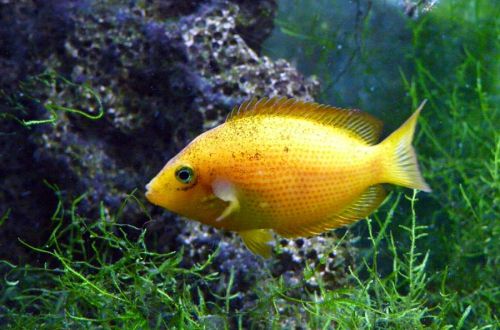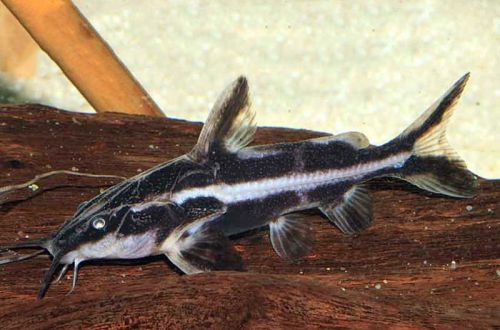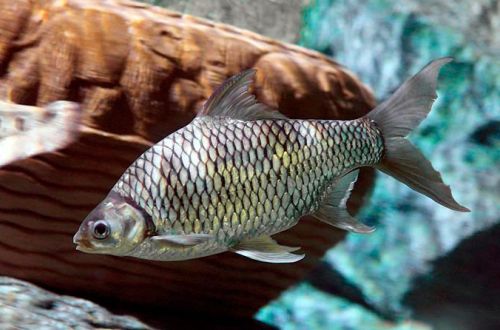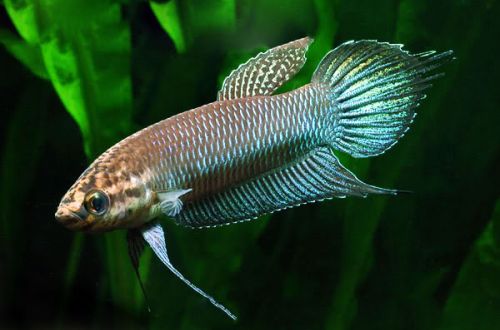
Orange Chromide
Etroplus spotted or Orange Chromide, scientific name Etroplus maculatus, belongs to the Cichlidae family. Beautiful bright fish, first of all it concerns decorative specimens, goes well with many peaceful species. Relatively easy to keep and breed, the only problem is maintaining high water quality. It can live in both fresh and brackish water.

Contents
Habitat
It comes from the Hindustan Peninsula and the island of Sri Lanka in Southeast Asia. It lives in the lower reaches of rivers, brackish estuaries (from Latin aestuarium – a flooded mouth of the river), coastal lagoons. This species belongs to euryhaline, able to live in a wide range of water salinity, as well as in freshwater reservoirs.
Brief information:
- The volume of the aquarium – from 200 liters.
- Temperature – 20-28°C
- Value pH — 7.0–8.5
- Water hardness – medium to high hardness (10-21 dGH)
- Substrate type – sandy
- Lighting – subdued
- Brackish water – yes, the permissible concentration is up to 15 g. of salt per liter
- Water movement is weak
- The size of the fish is 7–8 cm.
- Nutrition – meat feed with vegetable additives
- Temperament – peaceful
- Content in a group of at least 8 individuals
Description
Adult individuals reach a length of about 7–8 cm. They have a high oval body, compressed from the sides, low dorsal and anal fins stretching from head to tail. The body color is gray or silver strewn with small orange specks. There is a large dark spot in the center. Bright yellow breeding forms have also been bred. Sexual dimorphism is weakly expressed, it is rather problematic to distinguish between male and female.
Food
The diet should include a large amount of meat products (brine shrimp, daphnia, mosquito larvae, bloodworms) and herbal supplements (spirulina flakes). An excellent solution would also be the use of dry food in the form of flakes or granules containing protein and plant components.
Maintenance and care, arrangement of the aquarium
The optimal size of the aquarium for a small group of fish starts from 200 liters. The design usually uses a sandy substrate with a mound of stones, live or artificial plants and a few snags.
Water conditions can be both fresh and brackish with a salt concentration of up to 15 grams per liter. The main difficulty in keeping Orange Chromide is maintaining high water quality. In addition to a productive filtration system, a weekly replacement of 25–50% of the volume of water with fresh water will be required.
Behavior and Compatibility
Peaceful and friendly fish, gets along well with other non-aggressive species of similar size. It is worth noting that during the spawning season, very small fish can be attacked if the aquarium is not large enough. In brackish water, some representatives of viviparous species are suitable as neighbors, in freshwater – other calm cichlids and characins.
Intraspecific relationships are built on the dominance of adults and large individuals. It is recommended to keep in a group of 8 fish. With a smaller number, they can behave nervously, especially if they feel potential danger from other large neighbors.
Breeding / breeding
The stimulus for the start of spawning is a gradual increase in temperature and salinity, which mimics the beginning of the dry season in their natural habitat. With the onset of the mating season, several fish from the group form a temporary pair, which lasts for quite a long time. Parents take care of the laying and protect it (and then the fry) from other neighbors in the aquarium. Eggs are attached to a stone or plant with thin threads to prevent their accidental movement. The incubation period lasts 2 days at a temperature of 27°C, after another 2-3 days the fry begin to swim freely, but continue to stay close to the female.
In the general aquarium, the survival rate of fry is at a very low level. There are several reasons for this: in a large volume of water it is difficult to provide adequate nutrition, young inexperienced Orange Chromids often eat their own eggs, in addition, fry often fall prey to other fish, even despite the protection of their parents. You can save the offspring in a separate tank with identical water conditions, if you place an element of decor (stones, plants) there, on which the eggs are attached. Parents do not need to be relocated.
Fish diseases
The main cause of most diseases is unsuitable living conditions and poor-quality food. If the first symptoms are detected, you should check the water parameters and the presence of high concentrations of hazardous substances (ammonia, nitrites, nitrates, etc.), if necessary, bring the indicators back to normal and only then proceed with treatment. Read more about symptoms and treatments in the Aquarium Fish Diseases section.





